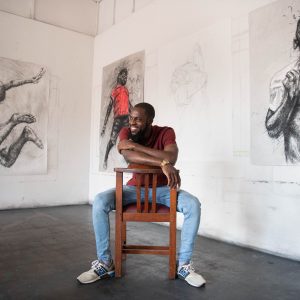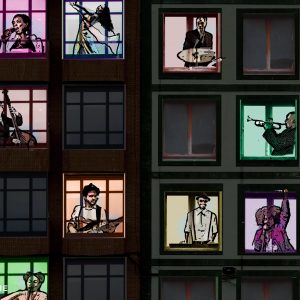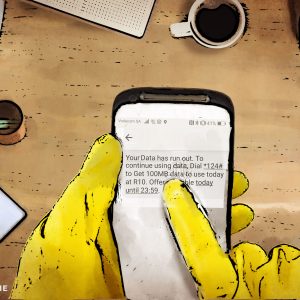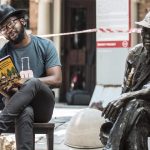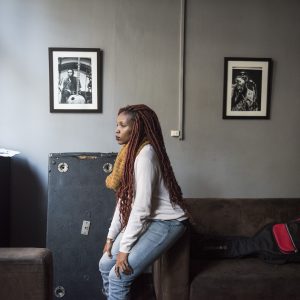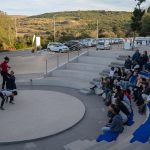SA arts festival pioneering the art of quarantine
As the National Arts Festival goes virtual during the Covid-19 crisis, its community of artists is entering a daunting new world.
Author:
8 April 2020
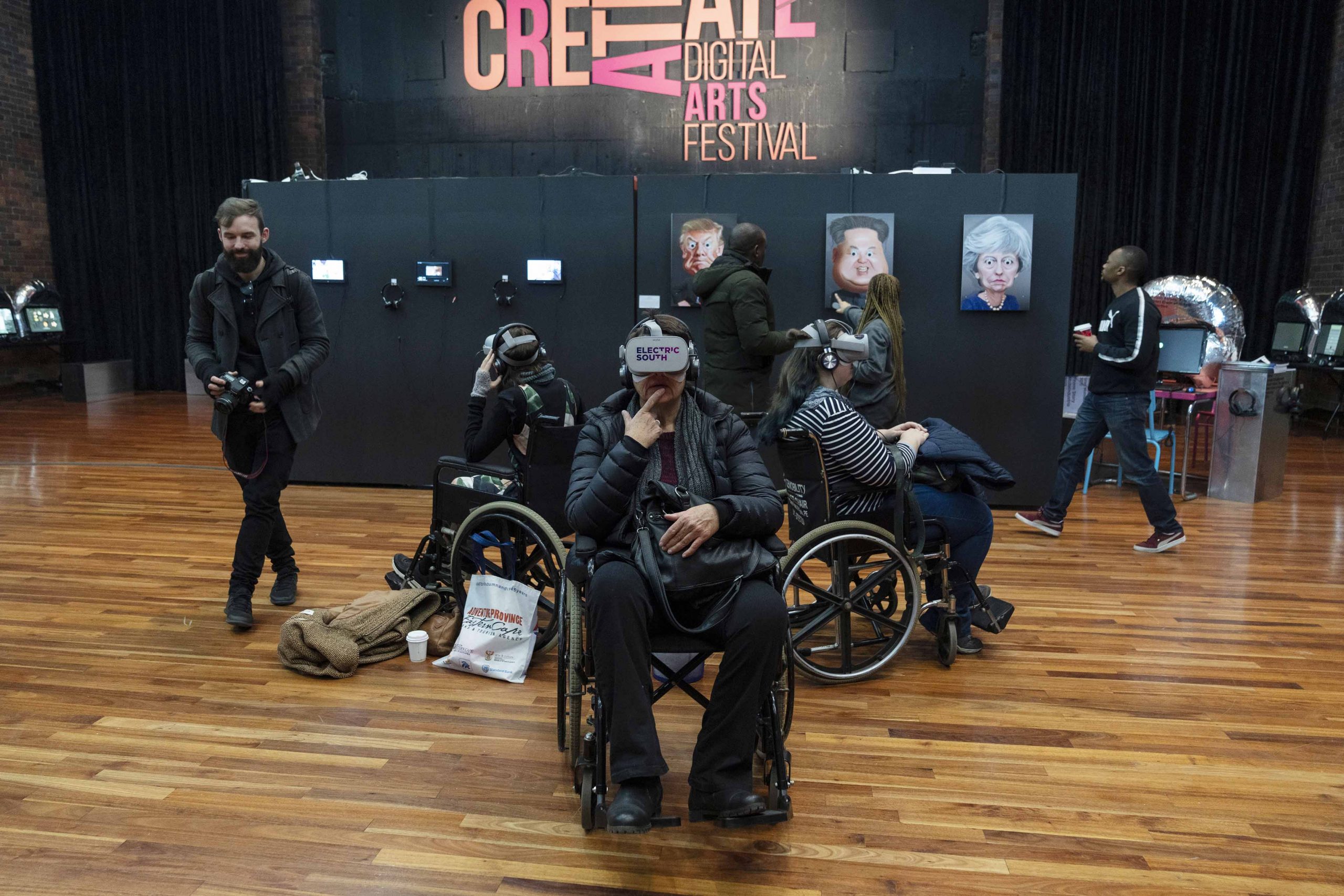
The Covid-19 lockdown has compacted the human world emotionally while disintegrating it physically. Our ever-densifying digital lives used to feel oddly alienating. But now, suddenly, they offer precious causeways to human contact. For some, our screens have become our emotional ventilators, supplying the oxygen of fellowship and consolation.
But for artists, those screens offer limited consolation. South Africa’s actors, dancers, musicians and visual artists are surveying the wreckage of their normal professional lives. Being largely self-employed, they have little or no security. Being largely dependent on live audiences, they have little or no work.
Across the world, thousands of arts festivals have been cancelled or postponed. Many others are being reinvented online.
Among those pandemic pioneers is the National Arts Festival (NAF), South Africa’s biggest cultural event, scheduled for late June and early July. A simple cancellation would scarcely have been questioned – so this was a brave and laudable decision.
Streaming live
“We didn’t want to cancel,” says the NAF’s CEO, Monica Newton, “because there is an enormous community of artists and technicians and ancillary support industries that is really suffering. What may already have been a difficult year for them has just become now an apocalyptic economic nightmare.
“This year’s festival is about trying something new. We’ve had to change our understanding of our financial model and think about how to present work online. That’s probably the biggest challenge for the artistic community, because we are not able to simply shift our whole 2020 programme online. Live doesn’t always translate very well into a two-dimensional space.
“So we’ve thrown open the challenge to those artists who were already scheduled to participate: is there work you’ve already done in a digital space, or can you reimagine your work in a digital space?
“We’re thinking of using a variety of different platforms,” says Newton. “There will probably be a gallery hosted on Instagram and/or on our website that would largely be static for visual arts and process-oriented work. Video content would be on a massive free YouTube platform.”
Usually, young and emerging artists occupy the Fringe programme with no guaranteed pay, relying on ticket sales to pay their bills, but this year the festival is reluctant to expose those entrepreneurs to the financial experiment that the digital format will entail. Still, the effect of the loss of the major platform for these artists must be considered as the festival provided a critically important creative and economic place on their yearly calendar.
Related article:
“We are looking to provide revenue-generating opportunities, but we are not asking any artist to join us on risk this year because we don’t know what the revenue model will look like. We are trying to protect the copyright of artists, but also to keep the experience to some degree a one-off. There’s something special about being the only cohort of people to experience something.”
Newton says there remains a chance that small live audiences will be possible at some of the streamed theatre and music performances. But if not, the sense of intimacy and interactivity that live encounters provide will have to be virtualised.
“We will resuscitate our critical thinking festival, Thinkfest, and offer webinars, workshops, podcasts – using spaces like Google Hangout,” says Newton. “We may limit some of those numbers for the interactive elements on an RSVP basis, but the non-interactive elements would be free to view.”
The Makhanda mandate
Within the constraints of the law in June, the festival will maintain its commitment to providing free access to performances for the festival community of Makhanda and the surrounding Makana region.
“A big part of the festival is our non-profit mandate and our commitment to open-access work. And this year, as far as we can with our budget, we will actively support the Fringe productions.”
As usual, Newton says, the festival will provide the technical spine for all productions, and this year that duty will involve digital production and post-production. “We will work with technical companies that are convergence-oriented, and we are learning about the enormously extensive tools that are available online. The Google suite of tools alone is amazing, and artists are doing some quite astonishing work in the Google Labs space.”
Newton says the pain of the loss of the conventional festival for Makhanda’s informal traders, who rely heavily on the annual influx of festivalgoers, can be mitigated but not avoided. A recent economic impact study by Rhodes University estimated the value of the 2019 festival to the Eastern Cape at R256 million, with R87 million of that expenditure staying in Makhanda. In recent editions of the festival, over 200 000 tickets were sold, while the NAF itself employed 31 full-time workers and 437 part-time workers.
And the creative labour of the festival is far from confined to the formal theatres and galleries. In a normal year, hundreds of street artists, dancers, musicians and small traders ply their trade in Makhanda’s streets during the festival.
“We are substantial revenue generators for the city and the province, but the real difficulty is that the overriding interest across the globe at the moment has to be the public health interest. The onus on everybody on this planet is to protect humanity, as hyperbolic as that sounds. That’s what we’re grappling with.”
Related article:
Soon there will be crowd-funding efforts to finance new projects, Newton says, and the festival is keen to support the efforts of the Ministry of Arts and Culture to channel funds to struggling artists. On 25 March 2020, the department announced that it had devoted an extra R150 million to relief for art sector workers and promised to engage with banks to negotiate relief for car, bond and rent payments. However, with regard to the allocated funds, the department states that priority will be given to “artists and practitioners who were already booked by some of the cancelled and postponed events funded by the department, as well as to the legends of the industry”.
Entertainers will also be involved in mass communication messages about the response to the virus, the minister, Nathi Mthethwa, also promised.
After this edition of the festival, Newton says, her team will be throwing its energies into boosting Makana’s SciFest Africa in September, and into becoming a year-round festival company once a semblance of normality is restored.
“We will build the brand and the audience base with the digital festival and then come back in 2021 with the biggest, best National Arts Festival we’ve ever seen. But it’s never going to fill the hole. I can’t lie to you. There are dark days ahead for Makhanda and the artistic community.”
The realities of virtuality
For the NAF’s artistic director, Rucera Seethal, this digital interlude is an opportunity for the festival and the South African arts sector to reflect, self-interrogate and re-emerge stronger. “We must generate answers for our virtual festival, all the while seeking to unearth the more precise and interesting questions. As my colleague puts it, ‘We are engineers on a moving train.’”
While the digital edition of the festival could be a powerful experiment, the economic limits of its reach are also clear. For one thing, for most South Africans high data costs remain a barrier to streaming video, even after the recent fall in prices in response to directives from the Competition Commission. In the gruelling months or years ahead, calories will outweigh megabytes in the survival calculations of millions. Data will become even more of a luxury item than it is at present. (A recent open letter to the government from a large group of heterodox economists called for, among many other interventions, the provision of free mobile data during the crisis; as a means of preserving household income and circulating accurate information.)
Related article:
Luthando Mngomezulu, who directed Isithunzi at last year’s NAF Fringe, believes the virtual festival might actually win new theatregoers for the 2021 edition and beyond. “The festival is critical to my professional life, particularly when it comes to building my creative network. So I’m feeling very uncertain about what this year will bring. But I do think there is potential to reach a wider audience through the virtual festival, which could help South African theatre in the long run.”
Pumelela Nqelenga, a performer, researcher and lecturer at the University of KwaZulu-Natal, is also cautiously optimistic – with a caveat. “It’s a lovely opportunity for national and international engagement. But if an international audience starts to provide funding, that may influence the creative decisions of local artists, so the local context may start to get lost.”
Many theatre practitioners believe that the fact of physical gathering, of a volatile and unrepeatable collision of human presences, is indispensable to what theatre is. Playwright and actor Jemma Kahn (We Didn’t Come To Hell for the Croissants) is typically unflinching in her assessment.
“I’m very gloomy about it,” she says. “I don’t think film theatre is the way to go. It removes the most important element of what the art form is. I think it’s fucking awful, but what are you gonna do? I hope to eat my words, but those are my words.”
Related article:
Maude Sandham, performer and co-writer of Tracks, says the theatre community needs some time to recover from the shock. “There are worse things to be upset about in the world, of course. But our work, with its ensemble nature and its interactivity, isn’t something that can be packaged into a file. There’s enough space in our community to be upset, and voice our upsetness. We need time to digest it.”
Sandham says the crux is to be responsive and not reactive. “People have gone into a panic and recorded things very quickly and put them online before the lockdown started. Or else, trying to find ways to make a performance happen on-screen, but with varying degrees of success.”
Similarly, Nqelenga argues that it’s too soon to give up on the latent possibilities of filmed theatre and performance art. “The aesthetic has to shift in a digital platform. The relationship between the digital and the live experience hasn’t necessarily been developed. I’ve watched filmed theatre by the UK’s Royal Court Theatre and The Globe, and the production quality was so brilliant that it added to the theatrical experience. Digitised theatre needs to evolve. We can’t do it immediately. And if we get it right, it’s also an invaluable space for archiving the work.”
One of the disciplines to master is economy, Nqelenga says. When you’re competing with the entire internet for attention, you can’t take your time as you do with a captive audience. “Brevity is key – people are realising you can’t do 30-minute or hour-long pieces.”
Related article:
Stage actors will have to adapt to the restrained rules of screen acting: every physical and vocal signal needs to be dialled down. But that subtlety of performance is amplified in a conventional film production by the use of multiple camera angles, professional sound and lighting, and the director’s literacy in film. The risk is of falling between two narrative languages. “You need to perform in such a different way,” says Sandham. “You can’t direct attention or create tension in the way you do on stage.”
Lulu Mlangeni, the Standard Bank Young Artist of the Year for dance, says that while dance performance clips go viral all the time on YouTube, they are often performed before a live audience, even if it’s an audience of two people. The audience co-authors the dance. “That energy means more to me than anything. I’m not sure how we’re going to find that connection.”
The crunch before the crisis
Even before the pandemic, the festival was increasingly embattled, despite the brilliance of so much of the work it presented. It has been caught between the increasing digitisation of our culture, the economic decline of the Eastern Cape and the entrenchment of some forms of theatre as a niche, middle-class pursuit.
Nqelenga puts it bluntly: “The NAF was never intended to be for everybody. The festival has always felt the need to uplift the community, but if we’re honest, it’s an elite group of people who come to watch it. I’m not saying it should always be like that, but that is the reality.”
The backstory of our arts crisis is the post-apartheid South African state’s tacit insistence that artists comprise a self-indulgent, luxury sector and must therefore sink or swim in the stormy seas of the marketplace, despite professional artists being without a systematic programme of long-term grant funding or income insurance. Our National Arts Council’s funding process is simultaneously chaotic and bureaucratic – a terrible combination.
The festival itself used to bridge the resulting funding gap. In happier economic times, taking a strong production to the NAF would be a profitable project. But in recent years, says Sandham, the houses have declined across the board.
Related article:
“Major artists would be performing shows and not be making bank,” she says. “It used to be that it was a big part of your year financially – you would put six months of your life into preparing your show – as well as being the centre of your creative community. But, more and more, it didn’t feel like that.” This decline was partly beyond the NAF’s control, she admits, with the recession and the Makhanda municipal meltdown making their jobs very difficult.
Even so, the festival has remained a precious professional and emotional home for many, says Nqelenga. “It’s the cornerstone for performing artists’ careers. Ninety per cent of them are not going there to make money; they are going to get exposure and to connect with other actors, writers, directors, producers, galleries, festivals.”
Medics of the imagination
Artists and cultural workers are not essential workers in the narrow sense of the state’s pandemic response. But in the broader sense, they are indeed essential as the interrogators of destructive national myths and the creators of better ones. A society without artists would have no idea where it’s going, where it should be going, or what it’s leaving behind.
The arts can play a powerful role as a subversive force. Across the world, once the pandemic subsides, authoritarian governments will seek to retain and deepen the emergency powers they have gained – and underground theatre could then become a potent vector of post-Covid-19 resistance. Sandham was struck by the impression that her show Tracks made on young Hong Kong democracy activists when she took the play there last November, during the umbrella protests. “They were so inspired to use theatre as a means of free communication, because there was so much censorship online and in the news. They saw the power of the transience of theatre.”
In crises like this one, we need to hold our artists close. We need imaginative remedies against despair, and the medics of the imagination must survive.

